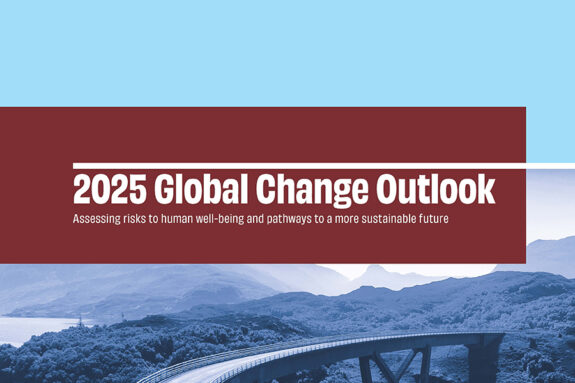Student Spotlight: Paris Smalls on making hydraulic fracturing more sustainable

Geophysics/Civil Engineering PhD candidate and entrepreneur exploring methods to make hydraulic fracturing more sustainable.
Read this at WHOI’s Through the Porthole
Paris Smalls is a fifth-year PhD candidate studying rock fracture mechanics in the MIT/WHOI Joint Program. His research is focused on the utilization of electrical current as a “pre-stimulation” mechanism during hydraulic fracturing operations. He started his studies working on dike intrusion modeling and Yellowstone microseismic projects as a student of Dr. Mark Behn and Dr. Rob Sohn at WHOI. In 2019, he became interested in developing sustainable energy technologies in the Geosciences, and decided to join the Einstein Rock Mechanics Lab at MIT.
Tell us a little bit about yourself and life before joining graduate school?
I was raised in Atlanta, GA and am a proud first-generation college student. My mother is a flight attendant for Delta, and my father was a music producer before retiring. His biggest hit was Lil Wayne’s song “Lollipop”, but he also worked with other celebrities including Kenan Thompson from Saturday Night Live, who apparently had a short and unsuccessful music career. I ran track in high school, and was awarded a partial-scholarship to attend the University of South Carolina as an undergraduate. Majoring in Geophysics allowed me to receive in-state tuition due to an agreement between Georgia and South Carolina for supporting students studying in highly specialized fields. I did not know at the time that it was geoscience and not track that would determine my future career path.
How did you learn about the MIT/WHOI Joint Program and what encouraged you to apply?
During my junior year as an undergraduate student, I participated in the California State University – Monterey Bay REU program. Each student in the program was placed at a different scientific institution around Monterey Bay, and I was placed at the Monterey Bay Aquarium Research Institute (MBARI) to work with Dr. Charlie Paull on a project to study mysterious pockmarks discovered on the Beaufort Sea continental shelf. During my time at MBARI, I interacted with researchers who collaborated with WHOI scientists and previous Joint Program students, and they spoke highly of the quality of research conducted in Woods Hole. This experience motivated me to apply to graduate school in the ocean sciences, and the MIT/WHOI Joint Program was an obvious first choice.
What were your research topics when you first entered the program and how has that changed from what you are currently studying?
Every student in the Marine Geology and Geophysics Department at WHOI is required to complete two projects in separate disciplines as part of their “General Exam” requirements. My first generals project was advised by Dr. Rob Sohn and we studied microseismic signals collected by seismographs deployed near hydrothermal vents in Yellowstone Lake. My second generals project, advised by Dr. Mark Behn, focused on numerically modelling dike intrusion rates and subsequent faulting at tectonic rifts. During my third year of graduate school I got involved with the MIT start-up ecosystem, and decided to create a geoscience focused start-up, Eden GeoTech. My PhD Thesis work shifted to be more in line with the technical skillsets I needed to successfully lead the company’s technology development, and last year I joined the Einstein Rock Mechanics Laboratory at MIT.
How did you land on the list for Forbes 30 Under 30 2021 – Energy?
I received a message from Emily Reichert, CEO of GreenTown Labs, the largest clean technology incubator in the United States, asking if I wanted to be nominated for Forbes 30 under 30 2021 – Energy. I knew a couple of friends who made the list in previous years, and their start-ups where at similar maturity levels as mine, so I knew there was a good chance of making the list. The actual application process is straightforward. Once you are nominated, they send you a form asking for background details on the projects you are working on, revenue, team members, etc. The most shocking thing for me was how quickly they made the decision. I woke up one morning, 2-months after applying, and found out that I made the list. It was a pleasant surprise!
How has being a Black Geoscientist affected your experiences in the MIT/WHOI Joint Program?
I was the only black student in the MIT/WHOI Joint Program during my first 4-years of graduate school. While disappointing, I understand that one of the key reasons for this is the lack of underrepresented minorities that are involved in the ocean sciences at the undergraduate level. I believe for minorities to not only be accepted, but to excel at high-level academic institutions, there needs to be a stronger sense of community that allows these students to perform their work in a mentally safe environment. My experiences overall have been positive, but it definitely took some time for me to feel comfortable as one of the few students of color in the program. I hope that the new WHOI administration continues to push for a stronger sense of diversity, equity, and inclusion within the broader institution, and especially the Joint Program.
Are there any interesting new projects that you plan on working on in 2021?
Yes definitely! Most of my company’s current customers are located in the Middle East, and we plan on making some big announcements soon on sustainable energy projects we are developing in the region. More to come soon!


